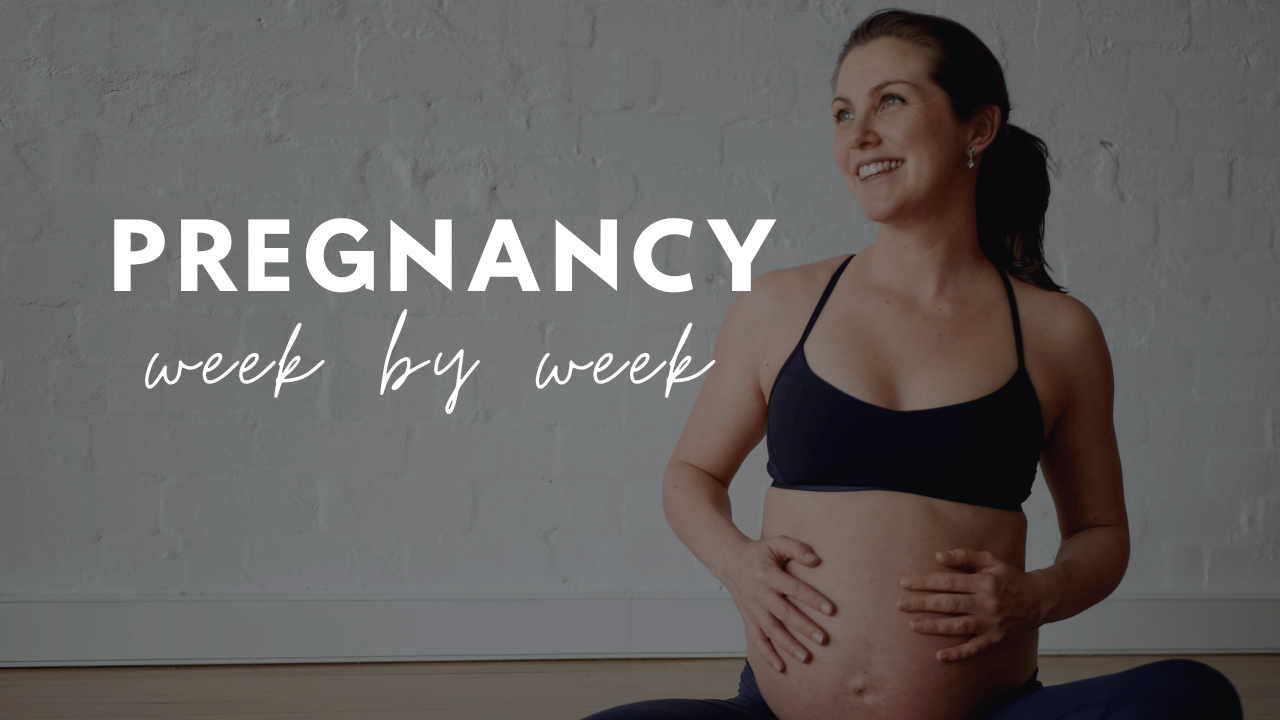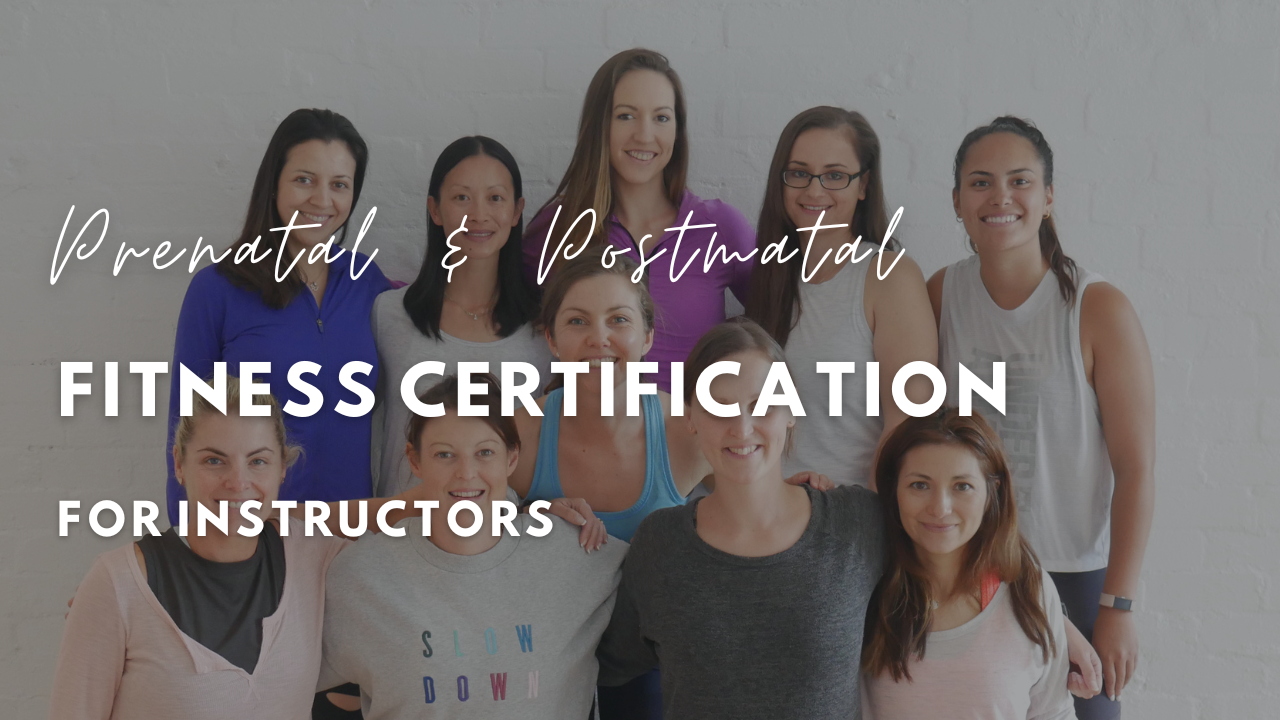When to Start Exercise after a Cesarean Section?

When to Start Exercise after a Cesarean Section
It is important you know how to exercise after a C-section and when you should start. It is also vital you are aware of what activities, movements and sports you can do, and which ones you must avoid after childbirth.
Before you leave hospital, your treating health care professional (doctor, midwife) should give you information on exercises that will help you recover from your c-section.
The problem is that I know this only occurs in about 10% of the cases. Or, maybe less.
Start Moving
You can start moving the day after surgery, but true 'exercise' (anything that raises your heart rate significantly or loads the core) usually begins at the 6-week mark with your OB/midwife's approval.
If you're anxious to get started earlier or want a personalized plan, book a postnatal physiotherapist - many now see C-section moms as early as 2-3 weeks for gentle core and scar work.
Official Guidelines on When You Can Start Exercising After a C-Section
(ACOG 2024, RCOG 2023, WHO 2023, and current pelvic-health physiotherapy consensus as of 2025)
Time After C-Section: Day 1 (in hospital)
What Is Safe to Start:
1. Deep breathing
2. Ankle pumps and circles
3. Short walks to bathroom or around the room (with help)
Official Clearance Needed? No special clearance - encouraged by nurses
Time After C-Section: Day 2 - Week 2
What Is Safe to Start:
1. Frequent short walks (5-10 min, many times a day)
2. Gentle pelvic floor contractions (Kegels)
3. Diaphragmatic breathing
Official Clearance Needed? No
Time After C-Section: Week 2 - 6
What Is Safe to Start:
1. Gradually longer walks (up to 30-45 min)
2. Light stretching, postnatal yoga (no twists or crunches)
3. Pelvic tilts, gentle TA (deep core) activation
Official Clearance Needed? No
Time After C-Section: Week 6-8
What Is Safe to Start:
1. Swimming/water aerobics (once bleeding has stopped)
2. Stationary bike (low resistance)
3. Light resistance bands, body-weight squats/lunges
4. Structured core rehab (heel slides, bird-dogs, etc.)
Official Clearance Needed?
YES - Most doctors/midwives clear you at the 6-week postpartum check-up if the incision is healed and there are no complication
Time After C-Section: Week 8-12
What Is Safe to Start:
1. Brisk walking, elliptical
2. Pilates/yoga with postnatal modifications
3. Light weights (≤10-15 lb)
Official Clearance Needed?
No additional visit needed unless you have pain or problems
Time After C-Section: Week 12-16+
What Is Safe to Start:
1. Running
2. Jumping
3. HIIT
4. Strength training (heavier weights)
5. Crunches (only if diastasis ≤2 fingers and no coning)
Official Clearance Needed?
Only if you had complications or still have symptoms
What Most OBs and Physios Use
0-6 weeks: Focus on walking + gentle restorative movement only
6 weeks: Typical time you are officially allowed to resume moderate exercise (after your doctor's clearance)
12 weeks: Earliest most women return to high-impact or intense training
4-6 months: Full return to pre-pregnancy sports/heavy lifting for the majority
When to Wait Longer Than 6 Weeks
Delay moderate or strenuous exercise if you have:
1. Wound infection or separation
2. Significant diastasis recti (>2-3 finger width) with poor core control
3. Ongoing pelvic or low-back pain
4. Pelvic organ prolapse symptoms (heaviness, bulging)
5. Persistent heavy bleeding
I work closely with a number of OBGYNs.
And they are experts in what they do but postpartum exercise is not generally one. And fair enough.
Midwives are not prenatal or postpartum exercise experts. But hopefully they should recommend a qualified prenatal and postpartum fitness trainer who is an expert as your postpartum recovery involves participating in an appropriate program.
Having a C Section is a Major Surgery
Please do not underestimate the physiological trauma your body has undergone, and don't let anyone make you feel like it's no big deal or an easy ride.
During surgery, the surgeon makes a horizontal incision just above the pubic bone, through five layers of skin, tissue, and muscle to reach the uterus, the amniotic sac, and your baby.
These layers include: The derma, or outer layer of skin, fat, fascia, the rectus abdominal muscle and peritoneum.
A transverse or side-to-side cut is more common, as this results in less scarring and chance of infection or complications.
A vertical cut is usually now used only in emergency situations and can be slower to heal, with more scarring.
C Section Recovery Week by Week
Scar Tissue
If you have had a C Section, there will be scar tissue. This is where the connective tissue is laying down and binding, to repair and heal. The process can result in tightness or pulling sensation around your scar.
What Does This Do to Your Belly?
Layers of tissue are cut and then sewn back together, which creates scarring through multiple levels of tissue of your abdominal wall.
This scarring affects the muscle's ability to glide over the top of each other during muscle contraction. The result is weakness and a lack of stabilization.
If you have had more than one C Section, then your abdomen may not have repaired completely before your body went through the whole process of pregnancy and surgery again.
As a result, if you return too fast to exercising after a c section then you can cause some serious harm.
If you participated in a regular prenatal fitness training program which had a focus on core strengthening; then you will be starting with stronger abdominal muscles will help with recovery.
By strengthening the deep muscles of your core and pelvic floor during pregnancy will give you the 'muscle memory' to make it easier to do the exercises after the birth.
Does Massage Help Scar Tissue?
Yes, but the right type of massage. Massage can help relieve this and aid comfort and healing. What you need to do is to rub and massage the skin gently between your fingers around the scar. This will aid in the break down of the scar tissue.
Speedier Recover?
I know first-hand that participating in a postpartum exercise program will help you recover after childbirth, make you stronger and improve your mood.
Regular exercise after you've had a baby will strengthen and tone your muscles and raise your energy levels so you feel less tired. Of course, it will get you back on track to losing baby weight and feeling fit again.
And how soon you're ready to start exercising depends on your individual circumstances.
But please, dedicate some time right now to looking after your health and wellbeing. Core strength training or weight loss should not be a goal until you have fully healed and recovered.
Once given the all clear, you should try to start moving when you are able to get out of bed. Your first goal is to start with gentle walking as this will help you recover from your surgery.
What if You Had Complications?
If you had any complications during pregnancy or birth, or you have any medical problems, your doctor or physiotherapist will advise you what exercises after a c-section you can or cannot do.
Do Pelvic floor Exercises after a C-section Help?
Yes. If you participated in my online program, then you would have been doing your pelvic floor exercises every week. And this should be paying off right now as you have strengthened your pelvic floor muscles.
After your c-section, you can start to exercise your pelvic floor once your catheter has been removed and as soon as you feel ready.
The primary purpose of these exercises is to help strengthen the muscles that support your womb, bowels and bladder. This may help you manage any problems with leaking urine.
Abdominal Exercises after a C-section
The right core exercises will help to strengthen the muscles in your abdomen. This will help you to protect your spine and have good posture.
Please avoid any planking or those dangerous old traditional sit-ups. Yes, I still see some trainers online getting their clients doing these. But they will only do you more harm so please avoid them.
The type of exercise after a c-section is what matters most.
You do not want to jump straight back into a rigorous training program. Your body is healing and recovering postpartum so you need to respect that.
You can start 'relaxation sessions' right away and then a fitness plan that consists of appropriate postpartum exercises and movements. But avoid any ballistic exercises or movements that cause damage to your healing stomach.
The Importance of Core Exercises
You need your core for many daily movements including pulling, pushing, standing up, sitting, moving, twisting, bending or turning.
Your core is connected to the muscles of your pelvic floor. And as you know a strong pelvic floor will help to prevent you from wetting yourself or having a prolapse.
When Can I Start?
If you are not sure, then wait until you've had your 8 or 12 week postnatal check with your GP before commencing a more intensive fitness program.
And to be honest, for your first 12 weeks you should only participate in safe gentle exercises. Going hard too soon must be avoided.
Avoid any high-impact exercises, such as aerobics, running and resistance or weight training.
Once you have recovered from your c-section and no longer have any pain, it is usually safe to start low-impact exercises, such as swimming, postpartum Pilates, yoga, light jogging and low resistance gym work.
Watch Out for Diastasis Recti
Before you do any exercise, check for diastasis recti. This is when your abdominal muscles separate. It happens to every pregnant woman.
However, for some women, these muscles do not merge back together as quickly which will impact on how and when you exercise postpartum.
Care must be taken to work those muscles to avoid widening the gap further. There are exercises you can do to handle it, and you shouldn't do any other abdominal exercises until you do the ones that can help diastasis recti go away.
Can I Exercise in the First Six Weeks after C Section
During this life-changing period as a new mama, you will be experiencing a lot of emotions and post pregnancy body changes. During this period, you should not be doing any high-impact intensive exercise. You should be focusing on your breathing and re-connecting your your tummy and your pelvic floor.
Exercise as you once knew it is different now. So the answer to this question is that you should not participate in any vigorous exercise and you must know what exercises to avoid.
But once your core has healed, you can start with some appropriate, safe postpartum exercises.
The problem I have found is that most new mamas do not know what these exercises are. This is why I created my Core Rehab for Mamas program.
Exercises To Avoid
You should avoid planks, crunches, sit-ups, twisting movements, and push-ups in the first twelve weeks after starting to exercise again.
It is vital that you only start exercising once your core has healed from the surgery. And when there is no clear sign of diastasis recti or any pressure on the abdomen when doing core work.
I want you to avoid curling the front of your body as this only encourages further separation of the abdominals (increasing diastasis recti) and it will prevent you from properly recovering.
You need to build-up your core stability before progressing to more challenging abdominal or core exercises.
Core Exercises to Avoid Include:
1. Planks
2. Twisting movements that put strain on abdominal tissues
3. Lifting heavy objects
4. Push-ups on a flat ground
5. Jumping
6. Leg raises
7. Sit-ups
This is Me.
I want to show you how I looked at 12 weeks pregnant and then again 10 weeks postpartum. Scroll down a little further and you will see me each week of my first 7 weeks after childbirth.

How To Get Rid Of Hanging Belly After C-Section
What about that c-section pooch?
How can I get that flat stomach after a C-section?
What can I do to get rid of my preggie belly?
Are these the questions you are asking?
You're not alone.
First I want you to understand why you have this belly post-birth.
Then, I have listed some positive lifestyle habits you can start to 'action' that will help you to get rid of that hanging belly after a c-section.
I wrote a really informative post titled 'Why Do I Still Look Pregnant' which I want you to read so you can understand why you continue to look pregnant well after childbirth.
Every mama gets this after a c-section.
The frustrating part for you may be that you find yourself stuck with these 'tummy shelves' for a good while others will be slim and return to their pre-pregnancy belly quite quickly.
Genetics, leftover scar tissue development all play a role in how you recover.
What I want you to do is not compare yourself to others. Forget the 'Yummy Mummy' guilt trips put on us by various media and people.
This is why our PregActive family is there to support every woman throughout their recovery and encouraged to avoid the outside noise.
This is Me during My 7 Weeks Postpartum Recovery

Is there an Exercise After C-Section To Reduce Tummy?
Why do so many new mamas search for tips for reducing belly fat after a C-section? I want you to be kind to yourself.
You have brought new life into the world and your body has changed dramatically throughout pregnancy and also now after childbirth.
I do get it why you may want to reduce your tummy or belly fat. What I want you to do is accept that it will take time and you need to do it the right way.
Doing the wrong exercises will only cause more harm, increase your ab separation, and delay your recovery.
Here are some tips to help you get started. It's about making the right lifestyle choices, setting realistic goals and progressing slowly.
For you, if you follow these tips, your belly pouch will go away or at least subside to the degree that makes you more comfortable with your body. There are other options you can discuss with your doctor if you require further assistance.
1. Get Moving by Walking
As I have already mentioned, when you have a C-section the surgeon cuts through some of your stomach muscles which can result in a pouch of fat on your tummy. What this can do to your body is to cause stress on your abdominal muscles and Pelvic floor.
So, first heal and recover before you start exercising. When you can, I recommend that you get moving by walking.
2. Massage May Help
Once approved, you can safely get a post-pregnancy massage from a qualified therapist. Massage may help break-up belly fat and to help lose fluids from the lymph nodes, thereby reducing your waistline. But please don't think that massage will just work in getting rid of your belly fat.
Make sure that during your recovery the therapist avoids the abdominal area and focuses only on the back, hands, and legs. A qualified therapist will know what they can and can't do.
3. Drink Lots of Water and Fluids
Drinking water will help to maintain the fluid balance in your body and also burn the excess fat around your waist. You need to stay hydrated!
4. Start Eating Healthy Foods
Eating healthy as a new mama starts by making sure your diet is rich in carbohydrates, low in fat and loaded with the required vitamins and minerals. Eat more fruits, vegetables and lean protein.
Avoid sweets, high saturated, fried foods and soda (soft) drinks.
5. Breastfeeding
Did you know that breastfeeding burns approximately 500 extra calories a day? And that it also releases the oxytocin hormone that stimulates uterine contractions and helps your uterus get back to its pre-pregnancy size.
The American Pregnancy Association says breastfeeding burns off as many calories as 45 to 60-minute run!
6. Get Adequate Sleep
I know, you just laughed at the suggestion you get sleep with a new born who is demanding your attention all hours of the day.
I want you to aim for at least 5-6 hours of sleep. Just do your best during this difficult time.
Can I Do Yoga to Reduce Tummy Fat?
Yes, when the time is right (6-8 weeks after delivery), you can practice yoga after a C-section to reduce tummy fat.
I love yoga and I have been teaching it for the past fifteen years. Yoga helps to tone and strengthen the stomach muscles. It can also help you to deal with stress and changes.
But there are many moves and poses that involve twisting, bending backwards that must be avoided.
When Can I Start Doing Crunches After C-Section?
The quick answer to this is 'You have to wait until your core is healed!' I never advise crunches until I can see no clear sign of diastasis recti or any pressure on the abdomen when doing core work.
This can be anywhere from eight to 12 weeks after being cleared to workout from your doctor.
If you return to exercising too quickly you can cause an opening of the incision and other complex medical problems. Heal - Recover - then you can start working out!
Can I Do Squats After C-Section?
How soon you can do squats after giving birth is highly individualized. When i say squats, I don't mean squats in the gym using a barbell. I'm referring to body-weight squats.
Again, there is no one answer for all as you will be ready to do squats once your core has healed.
When Can I Start Walking After C-Section?
Your doctor will want to get you up walking as soon as you can. They will not want you to be bed-ridden for a long period of time due to the risk of clotting. So walking will start soon after childbirth.
With regards to walking to get fit; it starts when you're home and you start to take baby for a walk in the pram (pusher). Start slowly and increase the distance progressively.
After 6 to 8 weeks, you will still be healing inside so this is when your walking speed and distance can increase.
Please stop if there is any discomfort, pain or a pulling sensation on your scar and try again a couple of weeks later.
What are Some Low-risk Exercises for Mamas?
The following exercises are suitable once you have healed your body:
1. Postpartum yoga
2. Pilates
3. Walking
4. Swimming and aqua aerobics (once the bleeding has stopped)
5. Low-impact aerobics
6. Light weight training
7. Cycling
Performing core exercises are beneficial following a cesarean delivery. But ONLY once your body has healed which could be anywhere up to 12 weeks post pregnancy.
Immediately after birth, start with walking, your pelvic floor exercises and gentle movement.





